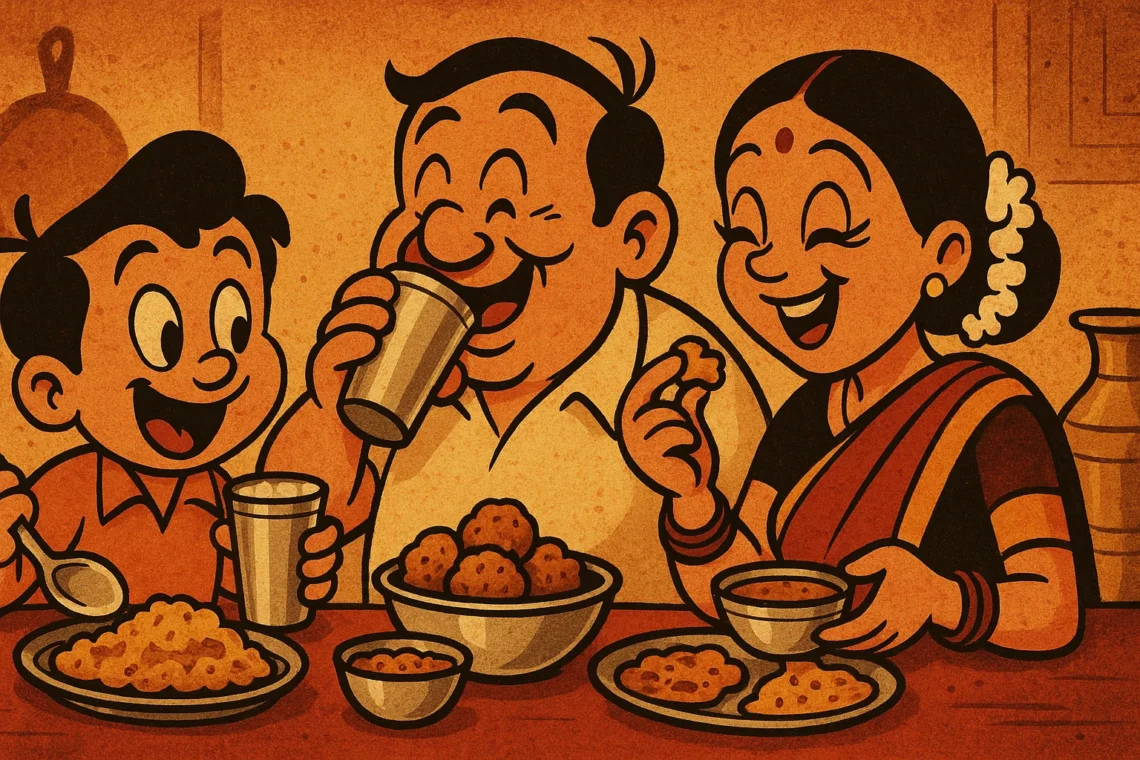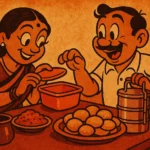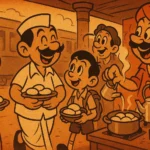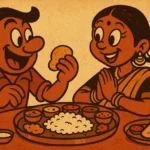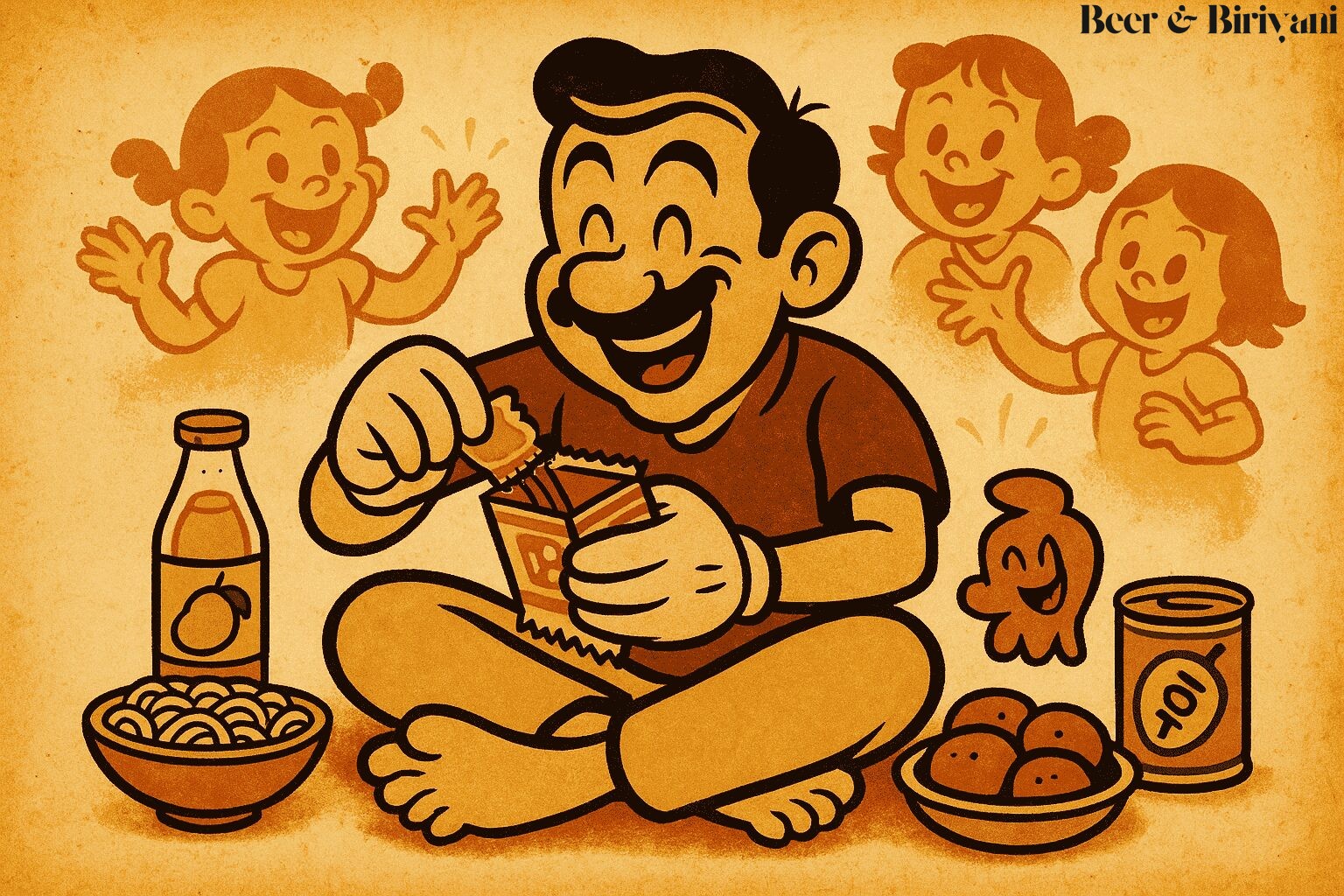You never really drank Frooti from the box at home. The tetra pack was for travel—train journeys, birthday return gifts, weddings where someone handed it to you with a straw that never quite fit. But at home? Frooti lived a different life. It was poured—ceremoniously, lovingly—into steel glasses, chilled in the fridge, and served like gold. And that one act, that transfer from cardboard to cold steel, elevated it from mere juice to something ritualistic. Something sacred.
In our house, steel glasses were serious business. They weren’t for show. They were the default. Tall, heavy-bottomed, slightly dented, and somehow always colder than the fridge itself. When someone said, “Want a Frooti?” they didn’t hand you the pack. They reached for the good steel glass, the one with the tiny groove around the middle, filled it halfway (never full—you had to earn the second pour), and passed it to you like they were handing down inheritance.
Why We Poured It Out
There was no practical reason to transfer it. It added dishes. It wasted precious drops in the creases of the pack. But it was never about utility. It was about experience. The first sip from a cold steel glass hit different. The mango flavor felt thicker, colder, more real. Your lips stuck slightly to the metal. The condensation ran down the sides. And you drank it slowly—because in a house with siblings, one steel glass was all you were getting.
And then there was the unspoken rule: no clinking teeth on the rim. That earned a glare from someone older. The glass demanded respect. Even if it was holding something as playful and sugary as Frooti.
The Chilled Glass in the Back
Some steel glasses were kept permanently in the fridge, stacked awkwardly next to the pickle jars and leftover dal. These were the VIP vessels—always ready to serve water to guests or a last-minute cold drink when someone returned sweaty and sunburnt. And if there was a Frooti lurking in the back of the fridge, already chilled and forgotten, pouring it into that pre-chilled glass was pure luxury. Not the kind you post online. The kind that makes you smile quietly to yourself between sips.
Frooti in Disguise
Guests never knew it was Frooti. They thought it was homemade mango juice. “Bahut achha bana hai,” they’d say, and someone would smirk silently, proud of the illusion. The pack would be hidden under newspapers in the corner, and no one would correct them. Because Frooti in a steel glass somehow did taste homemade. Like something your mother made fresh, just for you. And really, didn’t she? By pouring it, by chilling it, by offering it not as a product but as a gesture?
It Wasn’t About the Drink
Now, in a world of glassware and Pinterest kitchenware, I still keep a few old steel glasses in the cupboard. Not because they match anything, but because they match everything that mattered. On hot days, I pour orange juice into them and pretend. It’s not the same. But when I hold that cold metal cylinder in my hand, something shifts. Time slows down. The sip feels like summer. And I remember how something as simple as Frooti could feel like a reward, a pause, a tiny celebration in the middle of a regular day.
Frooti in a steel glass wasn’t just a drink. It was a mood. A memory. A mango-flavored moment of love—served cold, without fanfare, and never, ever directly from the pack.
Born in Mumbai, now stir-frying feelings in Texas. Writes about food, memory, and the messy magic in between — mostly to stay hungry, sometimes just to stay sane.

